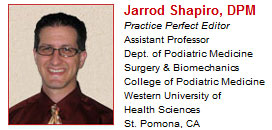|
More importantly, the authors found a 1.33 relative risk of stroke with a 95% confidence interval and p value 0.002. They also found a “dose response” relationship. In essence the more a person works per week the greater the risk of having a stroke as follows:
- 41-48 working hours - relative risk 1.10 (10% increased risk of stroke)
- 49-54 working hours - relative risk 1.27 (27% increased risk of stroke)
- 55 working hours - relative risk 1.33 (33% increased risk of stroke)
Let’s put that last number (relative risk 1.33) in perspective. Let’s say three of you are about to leave for work on a nice sunny Monday morning. As you are walking out the door you receive a phone call from me (Shapiro). I have magically gained the power to tell the future (go me!), and I have just told you that of the three of you leaving today one of you will be killed in a car accident. You have a 1 in 3 chance (or 33% chance) of dying if you leave. Will you call in sick that day or go to work? I’ll bet I won’t be seeing three of you at work that day. This might be a bit hyperbolic, and the comparison might not be totally accurate, but I think you get the point.
FEATURED LECTURE |
Today's Featured Lecture "Mobile Bearing Ankle Replacement"
by Benjamin Overley, DPM, FACFAS appears at the conclusion of the article.
|
The study’s authors discussed a few “biologically plausible” (their words) causes including triggering the stress response, the effects of physical inactivity, and potentially avoiding the warning signs of disease.2
I’ll admit to you that this study has me somewhat disturbed. With my work hours I’m clearly in their higher risk group for stroke, and I’m sure many of you are as well. This study looked at heavy work hours but did not consider the contribution of a busy home life into this risk. For example, I usually leave the house at about 6:00 AM, work until about 5:30- 6:00 PM (a bit later when on call), drive home for 45 minutes, and then attend to my home duties for a couple of hours before resting. At least a few times per week, I’ll work 2 to 3 more hours after the family has gone to sleep. In some sense, the time at home is additional work. If I combined all of that time together, I’m working somewhere between 12 and 16 hours per day 5 days a week (sometimes 6 days per week).
The only saving grace for us in the health professions is that the risk was also found to be greater for those with lower socioeconomic status (relative risk up to 2.18 in the lowest group – that’s a 118% increased risk in this group).2
It seems clear that the best evidence we have to date examining the risk of working long hours tells those of us who work too much that we are risking our health. I don’t have a pithy answer to rationalize this situation or a bulleted list of recommendations like I have done in prior issues. The only suggestion I can make without sounding incredibly hypocritical is for each of us to consider where we place our health on the continuum of what’s most important. If your health is most important then I suggest decreasing your work hours. How practical is that? I don’t know. That’s for you to figure out.
###
References
- https://www.bestmedicaldegrees.com/salary-of-doctors Last accessed Sept 19/2015.
- Kivimaki M, Jokela M, Nyberg S, et al. Long working hours and risk of coronary heart disease and stroke: a systemic review and meta-analysis of published and unpublished data for 603 838 individuals. The Lancet. Published online August 20, 2015.
|



























 This activity has been planned and implemented in accordance with the standards and requirements for approval of providers of continuing education in podiatric medicine through a joint provider agreement between the Kent State University College of Podiatric Medicine and PRESENT e-Learning Systems.
This activity has been planned and implemented in accordance with the standards and requirements for approval of providers of continuing education in podiatric medicine through a joint provider agreement between the Kent State University College of Podiatric Medicine and PRESENT e-Learning Systems. Physicians: Professional Education Services Group (PESG) is accredited by the Accreditation Council for Continuing Medical Education to provide continuing medical education for physicians.
Physicians: Professional Education Services Group (PESG) is accredited by the Accreditation Council for Continuing Medical Education to provide continuing medical education for physicians.